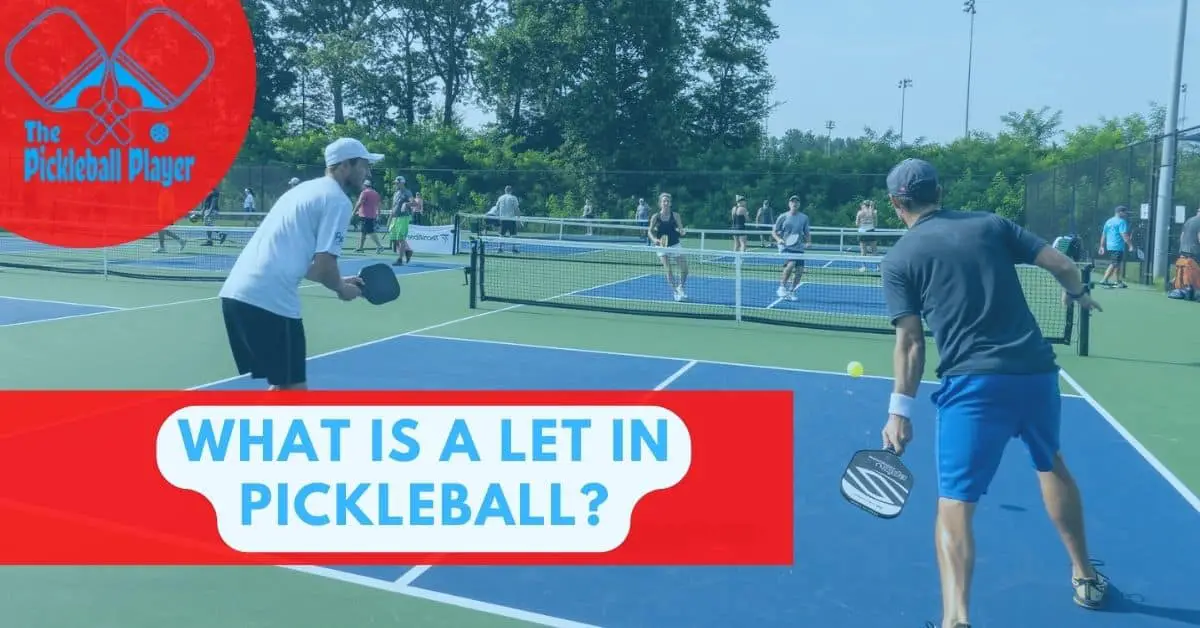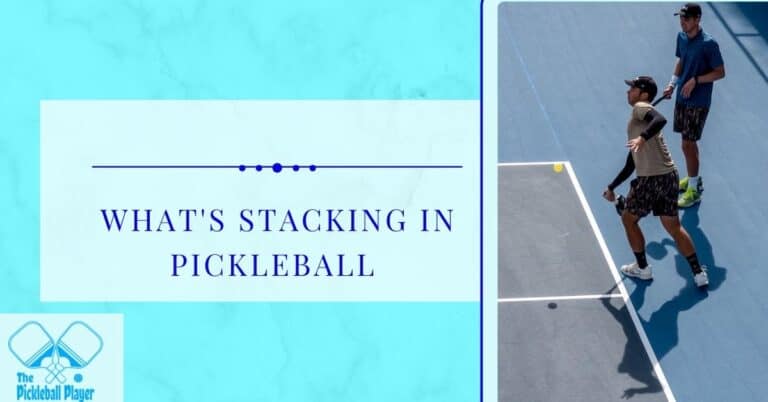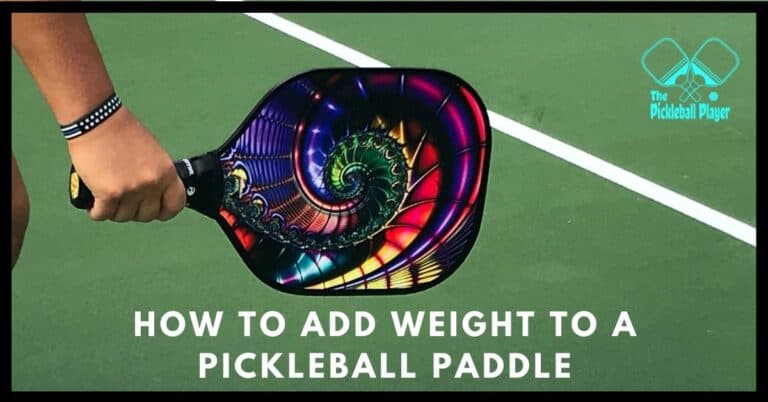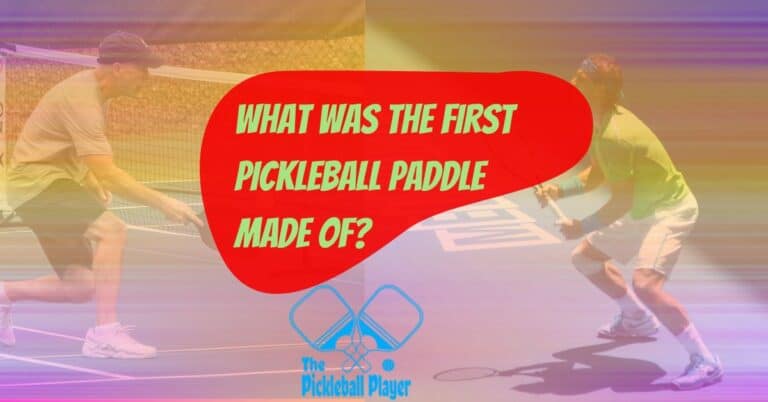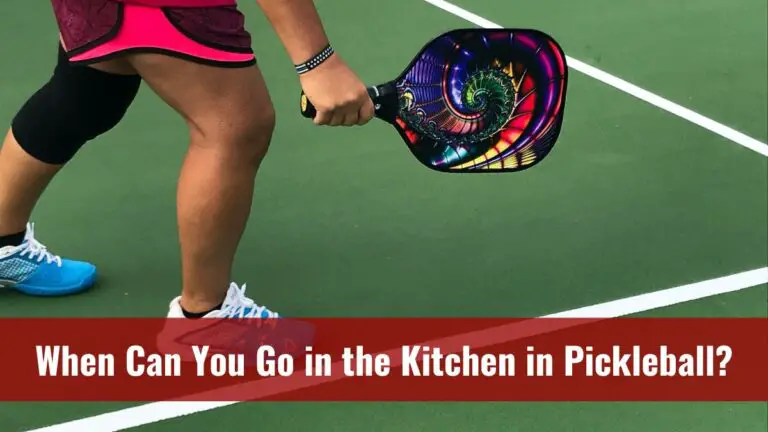What is a Let in Pickleball? The Simplest Explanation
If you are reading this article, you must have heard players calling ‘let,’ or you may want some update about the ‘let’ rule. Pickleball is a fast-paced game that is growing rapidly. Many changes happen in the rules book every year, most of which receive mixed reactions from the players.
“Let” was an extension of the service rule. It was one of those less-known rules which were eliminated in 2021. This article will explain the let rule and why this rule was removed.
Without further ado, let’s dive in.
Table of Contents
- What Is a Let in Pickleball?
- How Many Let Serves Are Allowed in Pickleball?
- Where Did the Term “Let” Come From?
- Recent Changes to the Let Rule in Pickleball
- Why the Committee Removed the Let Rule
- Benefits of Removing the Let Rule
- The Bottom Line
What Is a Let in Pickleball?
‘Let’ serve in pickleball is basically saying, “let’s do it again”. When a serving team hits the ball and the ball touches the net (but goes over it) before landing on the correct side of their opponent’s court, it’s a let serve.
Remember, if a serve lands in the kitchen after touching the net, it won’t be considered a let.
Let was simply a way to give the player another chance to serve without calling a foul or penalty.
How Many Let Serves Are Allowed in Pickleball?
As of now, a let serve is not allowed in pickleball. But previously, there were no limits to the let serves. Like tennis, players could call as many lets as they want, but only if the service met the criteria.
To be honest, let was more of a hassle and dragging.
Where Did the Term “Let” Come From?
It’s exciting to discuss the etymology of the term, and some theories are very logical. One interesting thing is that it came from tennis. As we know, pickleball is a mixture of tennis and ping pong and has many similar rules. It is believed that pickleball also borrowed the let rule from tennis.
Another theory is that it came from the French word ‘fillet,’ which means ‘net.’ The word then turns into ‘let’ as a short form.
One more assumption regarding the word ‘let’ is that it comes from the old Saxon word ‘Letian.’ Which, if you check the dictionary, means “to hinder, obstruct and delay”. In let serve, the ball reaches later than expected to the opponent’s court as it is slowed down by the net. This may not be a far-fetched theory.
Regardless of which theory seems more convincing to you, we know now that it doesn’t matter as much with the let rule gone.
Recent Changes to the Let Rule in Pickleball
By 2021, the let rule was no more part of the game. Players or referees were not allowed to call service let anymore. And if any player or the referee calls a let serve out of habit, the player/team who stops playing is at fault and will get a minus point.
Although the rule displeased some players, USAPA approved it in its 2021 rulebook.
Why the Committee Removed the Let Rule
Many people wanted to ask why the committee removed the let rule. The rule committee and the USA pickleball had their reasons. They provided the reasons why they eliminated the let rule:
- Preserving the integrity of pickleball
- What’s best for the players
- What’s best for officials
They also elaborated on the reasons and tried to provide a satisfactory explanation.
Preserving the Integrity of Pickleball
Pickleball may be the only game that focuses too much on cooperation and courtesy. It gives the benefit of the doubt to keep the game fun and fair. That is why the committee doesn’t allow any rule that has the tendency to harm the integrity of the game.
Some players might call a fair serve a let in a competitive match or when money is at stake. As there is no rule to question their integrity, the other team can lose a good point just because of an inaccurate call. It can be intentional or unintentional, so the rule committee removed the let serve.
What’s Best for the Players?
If a rule is not increasing players’ experience but instead causes conflict among the players, it is not acceptable. That is why the rule committee removed the let service rule.
Often in tournaments, when one team calls a let, the other team doesn’t agree with them. It causes conflict and makes players wonder if their opponents are cheating. They decided to eliminate let serve to avoid this situation and make the game the best experience for the players.
What’s Best for Officials?
Another point that the committee considers is the conflict between referees and players. When one team stops the game because they think it’s let service, but the referee didn’t detect it, the team is at fault according to the rules. Or when a referee calls it a let serve, and players disagree, it causes misunderstanding.
Sometimes the referee moves forward and touches the net to see if it’s a let serve. This movement causes distraction for the players and causes another conflict. Hence, affecting the integrity of the game.
So it was a better decision to skip this rule.
Benefits of Removing the Let Rule
Few players may not agree and are not happy with the removal of this rule. However, there are some clear benefits of doing so.
- The fun and competitive aspect of the games stays without any risk of cheating or conflict.
- A lot of time spent arguing whether it was a let serve or not can be saved.
- Without the let serve, players have no reason to stop the game and redo the serve, which speeds up the game.
The Bottom Line
This rule is still there in tennis and table tennis, but no more in pickleball. When the ball hits the net and reaches the right side after a bounce, its speed may not be the same.
Therefore, the other player must be quick on his toes to meet the slow ball in the middle of the court. But this has added fun, excitement, and anticipation to the game.
Also, if you heard someone call let, don’t get confused, because it’s not a foul.

